HEAVY CIVIL INFRASTRUCTURE IC
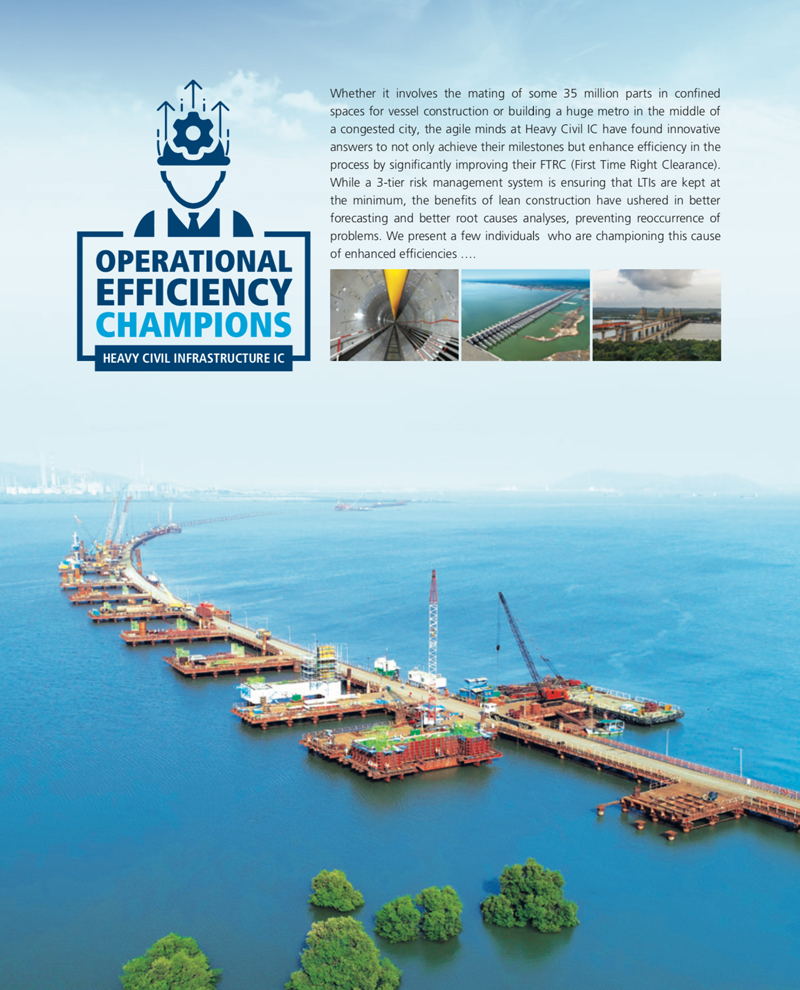
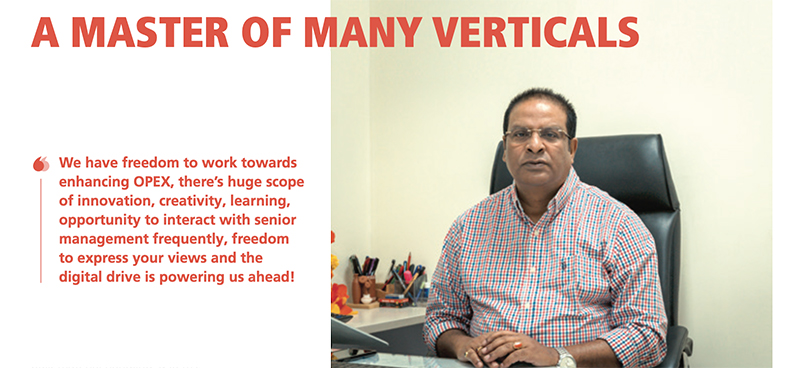
Aloke Kumar Dey,
Project Director,
UGC-01 Underground Metro
Project of MMRC, Heavy Civil IC
“One of my most memorable moments was to stand and watch the magnificent Niagara Falls in freezing temperatures of -35 degree centigrade with a wind chill of -40 degree centigrade,” shares Project Director, Mumbai Metro UGC-01, Package MMRC, Aloke Kumar Dey with a chuckle though he is quick to admit that his 15-year journey with L&T has been both cold and hot out of a total work experience of 35 years. “Although my broad expertise is in heavy infra works, particularly underground metro construction, I have also handled power projects and bulk material handling systems.”
His track record is cleanly divided into segments: first four years in power plant construction, next ten in bulk material plant industries, four years in L&T Power, five years at Delhi Metro, then back to power plant construction for 3 years. He then returned to handle underground sections of the Chennai and Delhi metro projects. During his nearly three-year stint at the Doha Metro, he completed 23 km of tunnelling using six EPB machines in a record time of 14 months and “I was actively involved in facilitating the client to enter the Guinness Book of World Records for operating the maximum number of TBMs in a city at a time.”
“Our focus areas are risk identification and mitigation and our 3-tier EHS Risk Management organisation involves front line engineers, managers and workmen.” The Mumbai Metro project has some unique challenges, “due to the tough sub soil conditions and heavy above ground structures including 100-150 years old heritage buildings within 1.0 m from the edge of deep excavation. In fact, our NATM tunnelling through controlled blasting is right below UNESCO-certified Cat-I heritage structures. Sequencing jobs as per design and managing high risks are huge challenges other than lack of skilled manpower, conflicts, skill retention and environmental issues.”
Aloke mentions their many ‘firsts,’ like “our robust mobile appbased digital segment tracking system, the automatic fire alarm system in tunnels, automated mechanism for precast OTE duct installation on a digital platform to minimise risks, the spider boom to place concrete in difficult areas, the specially designed conveyor system to efficiently remove muck from confined station areas, the hydraulic pile auger cleaning system and the overhead formwork for slab casting during tunnelling operations.”
Hailing from Kolkata, Aloke’s better half, Mimi Dey, is a home maker and they are blessed with a daughter. Ankita. A nature lover, Aloke enjoyed watching the ‘Valley of Fire,’ in the US, loves gardening, walking, watching football matches and reading.
Aloke shares that there is a lot going for L&T Construction. “We have freedom to work towards enhancing OPEX, there’s huge scope of innovation, creativity, learning, opportunity to interact with senior management frequently, freedom to express your views and the digital drive is powering us ahead!”
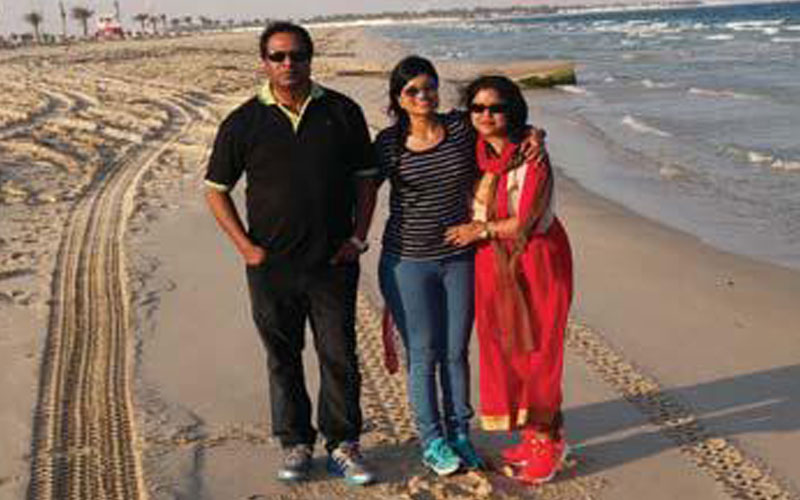
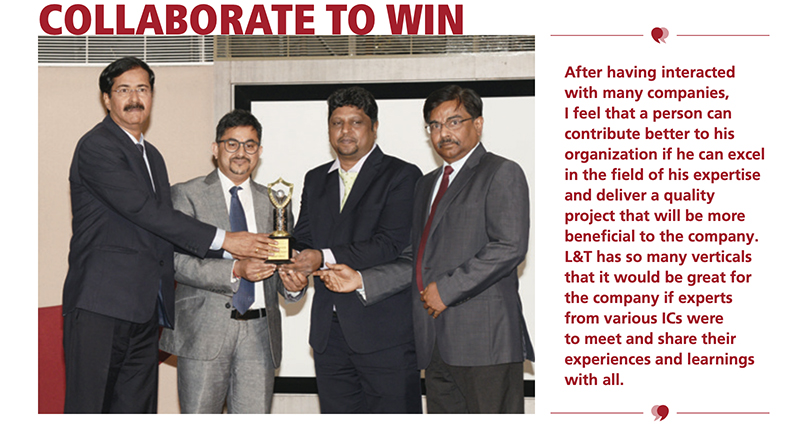
S Suresh Kumar,
Project Control Manager, Heavy Civil IC
“My initial challenge at the Riyadh Metro project was to contain and collaborate with a consortium on 10 partners to quote for the project,” begins S Suresh Kumar. “After we won the competitive bid, the task was to convert our plan into reality which was a Herculean task owing to the volume and complexities of various works happening parallelly. Add to that coordinating, interfacing and finding approaches to achieve a common goal in a multicultural environment.” Quite clearly a tough task but SSK, as he is more popularly known, has learnt to take these in his stride during his long career of three and a half decades having begun his association with L&T in 1985 as a Contracts Engineer in the Tendering department.
He loves travelling to new places and his job has taken him to many beyond Indian shores like Uzbekistan, Russia, the Ukraine and the Middle East. Presently he is Project Control Manager of the Civil Works Joint Venture at Riyadh Metro. “Being present since the inception of the project has helped to evolve the right strategies and establish proper channels of communication between the various stakeholders and align them towards a common goal,” he points out. “We have adopted a structured way to monitor progress, record discussions and constantly follow-up with different departments, monitor and control the performance of the various subcontractors and ensure timely mitigation of issues.”
Apart from using Primavera and Tilos as scheduling tools, SSK mentions that digitalization is playing a key at site. “Our concrete pour is digitally monitored, the daily progress reporting between the contractor and the Engineer is online as are Inspection Requests and Progress Verification Records to enable smoother invoicing.”
“I felt great when I landed back on my homeland in July 2009 after working abroad for 21 years and I also like listening to music,” he says, adding with a long face, “but time is a big constraint for hobbies.” His better half, Hema, is a homemaker looking after their children, son, Atul and daughter, Aarthi. “Another occasion that I happily recall is when my team and I were recognized for Excellence in Quality by the Employer’s Engineer in Dec 2017.”
Acknowledging L&T’s efficient and robust systems in tendering and operations, the freedom of performance and transparency, SSK concludes that “After having interacted with many companies, I feel that a person can contribute better to his organization if he can excel in the field of his expertise and deliver a quality project that will be more beneficial to the company. L&T has so many verticals that it would be great for the company if experts from various ICs were to meet and share their experiences and learnings with all.”
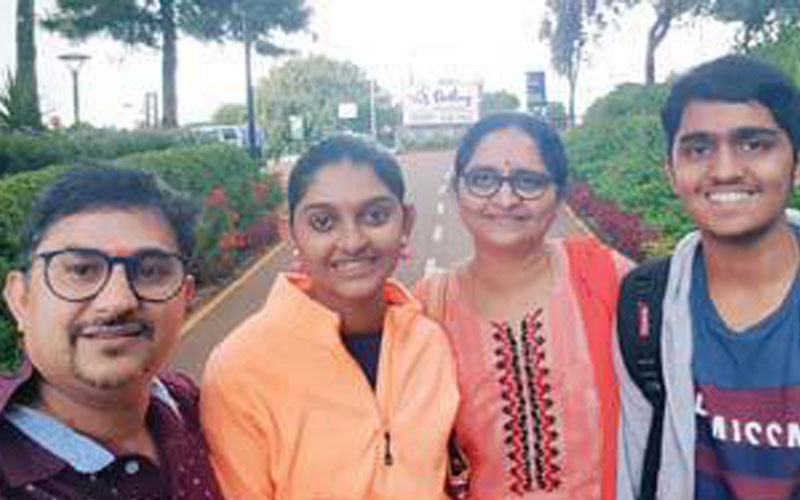
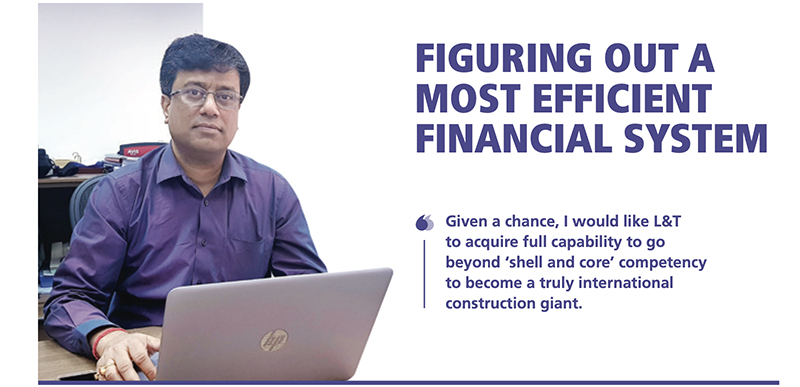
Ranjan Sengupta,
Head – Finance & Accounts, Riyadh Metro,
Heavy Civil IC
As head of finance and accounts for the US $ 6 billion Riyadh Metro project, Ranjan Sengupta who is directly involved in a mega project for the first time, is faced with new challenges. “Firstly, the project being executed under an Integrated Consortium structure, the scopes of partners executing Civil Work are not separable. The Leader’s ERP system and IT server, part of their global operation and tailor made for flexibility to site management, are without several checks and balances essential for an effective internal control system. The local partners’ interest is to maximise return on their own investments in property, plant and equipment and work sub-contracted to them. Given the country’s strict ‘Form over Substance’ approach and new legislations like VAT introduced for the first time in GCC, you can appreciate our position.”
To make the best of this situation, Ranjan and his team have taken various initiatives to enhance efficiency. “We have improved the Leader’s SAP Procurement system to establish checks and balances, like a system to ensure the locking of Purchase Orders after authorization triggering an amendment process for any subsequent modification. We have introduced modifications that disable reversal of any previously authorised activity in the entire process right from purchase request to material receipt, auto triggers in the PO approval process once aggregate value exceeds the threshold limit and several other modifications to the system.” He flags off a standalone system developed to overcome shortcomings in the existing ERP system to customize VAT invoicing as per the Saudi format in Arabic. “The system has been integrated to the customer’s master and invoicing data in SAP leaves no scope for editing or data distortion once created and exported into the main ERP system. An audit trail has helped us win credibility with the Auditors and the Saudi Tax Department”.
“Digital solutions are driving efficiency and we use them for concrete monitoring, time attendance, equipment hiring, VAT invoicing and to archive incoming invoices,” he adds with a satisfied smile. “We need the right mindset to use digital solutions to enhance our operational efficiency and I’m proud to be part of an organisation that is adapting to a data driven mindset by investing in technologies like AI, IoT, VR/AR to improve productivity and efficiency,”
A native of Kolkata, West Bengal, it is no surprise that he loves to listen to music and “hit the pool in summer when time permits.” His wife, Shampa, is a homemaker and they are blessed with a son, Subhadeep who is pursuing his 2nd year B Tech in Electronics and Communication in one of the leading NITs.
“Given a chance, I would like L&T to acquire full capability to go beyond ‘shell and core’ competency to become a truly international construction giant,” he concludes emphatically.
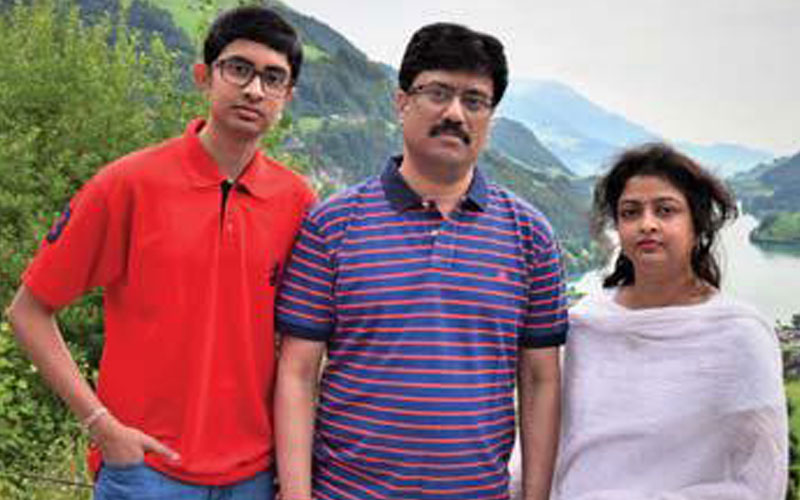
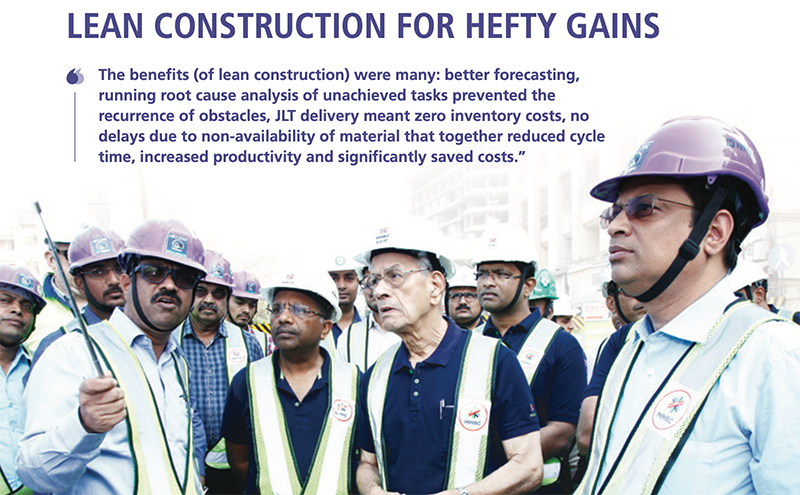
H Jayarama,
Project Director, MMRC, Heavy Civil IC
“At the Mumbai Metro project, lean construction has markedly improved operational efficiency,” states Project Director H Jayarama (HJ). “We introduced collaborative planning, last planner systems, waste elimination, JLT for material delivery but most critically we adopted a lean way of thinking and built a culture to ensure it worked.” Employees and workmen initially resisted to what they felt was extra work but once they realized its advantages, the concept was accepted. “The benefits (of lean construction) were many: better forecasting, running root cause analysis of unachieved tasks prevented the recurrence of obstacles, JLT delivery meant zero inventory costs, no delays due to non-availability of material that together reduced cycle time, increased productivity and significantly saved costs.” This initiative won the first prize for a lean implementation exercise conducted by IIT Mumbai & Chennai in collaboration with the Institute for Lean Construction Excellence for the period between November 2018 to August 2019.
Possessing a rich and varied experience of nearly three decades of having worked across a wide spectrum of infrastructure projects, HJ has spent the last four and a half with L&T on the Mumbai Metro project. He mentions an efficient shutter design, an efficient permanent and temporary design approach, proactiveness to solve socio-political issues and a customer friendly approach in problem solving as steps to enhance efficiency. “The ConEase application was a huge help,” he remarks, “to drastically reduce time for material request approvals and receipt. What’s more, we were able to track the entire process. In ConEase, we have the latest site release drawings for reference at any point of time. We also use face reading machines for attendance that has eased registering of workmen whose fingerprints were unreadable.”
The project has thrown up a unique set of challenges for HJ and his team. “Traffic decking is a huge issue as we are operating in congested areas of a congested city. We discovered that normal breakers couldn’t break the grade 1 trachyte rock we encountered and hence resorted to the time-consuming diamond wire saw cutting method right below buildings. The tree cutting issue was another vexing one,” HJ shakes his head. “We could proceed only after a High Court order. At the Marol Naka junction, the track comes outside the station box and to interconnect them, we have had to create cross passages and expand the tunnel with the NATM technology that is extremely complicated because of the varying geological conditions especially under the existing metro line.”
HJ would love speedier approval processes with subcontractors and vendors, more delegation of authority down the line, improved work environment and a more flexible approach to problem solving which will allow the engagement of the younger generation.
His better half, Anitha, is a home maker and they are blessed with two sons, Abhilash and Aarush and when he gets time away from his project, he reads.
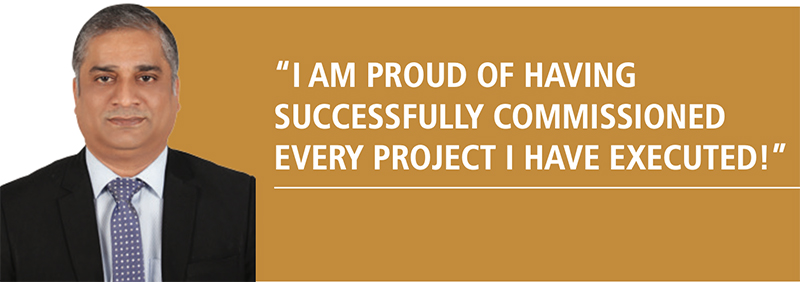
H Hemanth,
Head – Procurement – Riyadh Metro Project, Heavy Civil IC
There are not many people working at L&T who can proudly state that “Every project I have executed has been successfully commissioned,” and to have maintained that track record over 25 plus years is one of H Hemanth’s great achievements. During his long innings, starting off as Assistant Engineer, he has been involved in 7 other projects with his last assignment at Chennai HQ handling procurement before flying to Riyadh.
“As Head – Procurement at this huge and complex project, I had to virtually hit the board running,” he says. “My first and most important task was to understand the scope of work after winning the contract. Then, I had to work out subcontracting strategies capturing the requirements of specialized contractors/packages to pave the way for planned execution. Next, I prepared a programme for the long lead items and pushed for possible pre-bid tie-ups to reduce lead time and plan long term cost fencing with plant and equipment hirers.”
The way, however, was not a smooth one for Hemanth with several roadblocks in the form of, “shortage of experienced contractors and skilled workmen, frequent changes in the client’s priorities during execution, delays in certification of additional works and claims and non-acceptance of our terms and conditions by vendors.” A long list of impediments but Hemanth was ready with his strategy to overcome these roadblocks and improve operational efficiency in the process. “For starters, we did a capability benchmarking exercise with international market players. We improved our domain expertise for specialized items in MEP, finishes and evolved a regular internal cross-functional training mechanism to develop subordinates. We adopted new technologies and methodologies through value engineering, tracked and mapped critical clients and went the extra mile to maintain good relations with specialised subcontractors, OEMs, consultants and JV partners.”
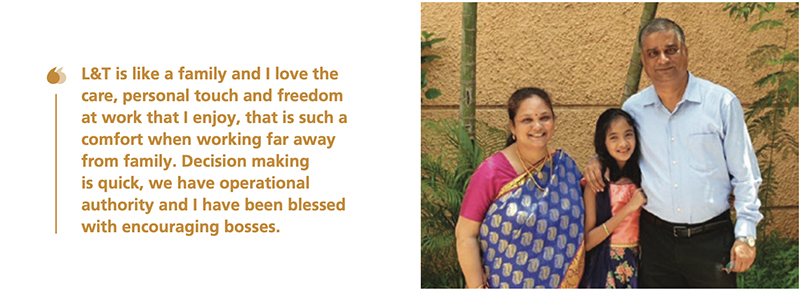
On the digital front, Hemanth has the advantage of a slew of solutions to improve productivity like ACONEX for document management, SAP for purchase orders, Promethia for procurement tracking, I-Faber, an e-bidding software and CONSTZON for benchmark rates.
“L&T is like a family and I love the care, personal touch and freedom at work that I enjoy,” he shares effusively, “that is such a comfort when working far away from family. What’s more, decision making is quick, we have operational authority and I have been blessed with encouraging bosses!” He hopes for a common database across L&T to share resources and leverage strengths and “to position L&T as a one-stop solution.”
A native of Karnataka, Hemanth’s wife, Leelavati, is a homemaker and they are blessed with a daughter, Mousumi. “I ensure to take out one hour in a day for my hobbies,” he smiles, “that are listening to music, reading novels and watching films.”
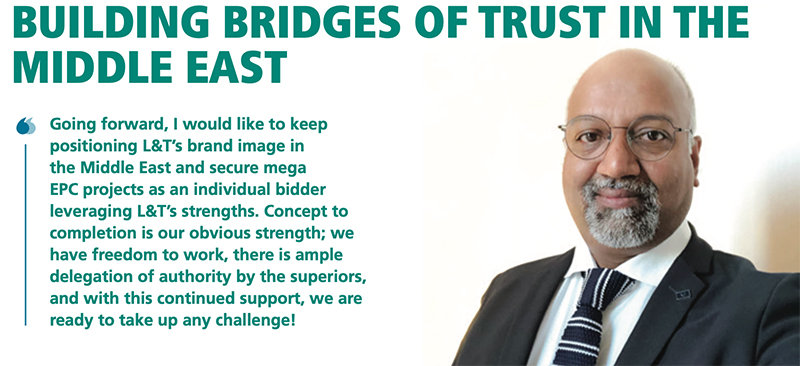
Dr S Sathiyamurthy,
Head – Cost Control, Riyadh Metro, Heavy Civil IC
To save cost and control cost overruns seem rather tame and straightforward responsibilities for the Head – Cost Control for the mega Riyadh Metro project but Dr S Sathiyamurthy (or, Sathiyaa as he is more fondly called) has far more responsibilities to shoulder. He enumerates them, “developing confidence with vendors to make them feel like our partners, maintaining lines of communication between various nationalities within my team, maintaining harmony within a cross-cultural team having as many as nine nationalities and building trust among several partners, again drawn from various nationalities.” In addition, he keeps a constant vigil to identify and mitigate risks, finalize vendors with first principle analysis, minimise damage to the environment and “maintain perfect synergy within the team to help us execute such a big and complex project,” he adds.
Sathiyaa started his association with L&T as a Diploma Engineer Trainee at the NLC Neyveli site in Tamil Nadu, constructing a Natural Draught Cooling Tower. “Thereafter, I was Planning Engineer at two sites – the Hosiery Industry Complex for Tirupur Export Association, Tamil Nadu and the housing project at Zernograd, Russia. Returning home, I became Contracts Manager at Chennai Regional Office and then headed Contracts for the Nuclear Business Unit, HQ, HCI IC before going across to the sands of Saudi Arabia.“
“The online concrete monitoring system we have introduced has helped us significantly minimize wastage,” shares Sathiyaa about concrete measures taken at site to improve efficiencies. “Long lease agreement to hire Plant & Machinery has gone a long way to control costs as also our effective utilisation and management of the labour colony locally that has both reduced travel time and, at the same, improved productivity.” He further mentions that open orders for many non-important items are carried out with strict monitoring controls. On the digital front, Sathiyaa mentions a few solutions including a cost monitoring system with a standard template, a system to manage and approve hired assets, digitally track variation orders and another to maintain and digitally track BOQs of subcontractors.
“After 27 years in L&T, it feels like my home with close relatives,” he gushes about the company he keeps. His wife, Sumitra, is a homemaker and their daughter, Shivani, obviously the apple of his eye, is perusing her 4th year architecture.
“Going forward, I would like to keep positioning L&T’s brand image in the Middle East and secure mega EPC projects as an individual bidder leveraging L&T’s strengths,” he says and believes that there’s a lot going for the organization. “Concept to completion is our obvious strength; we have freedom to work, there is ample delegation of authority by the superiors, and with this continued support, we are ready to take up any challenge!” he rounds off confidently.
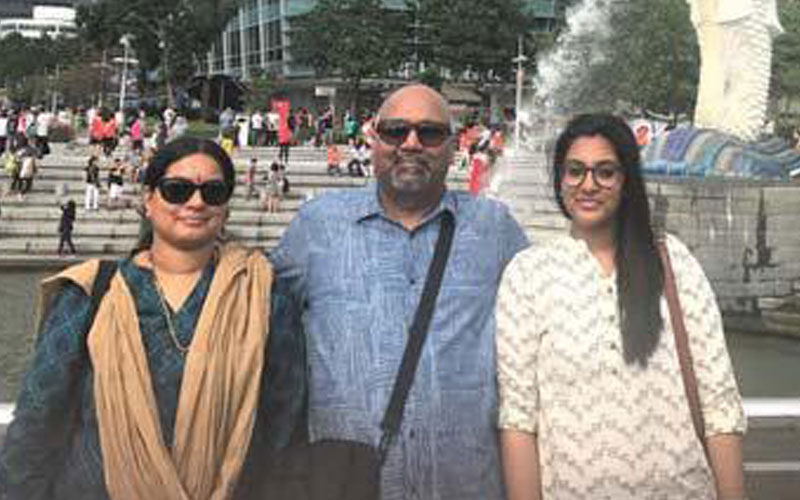
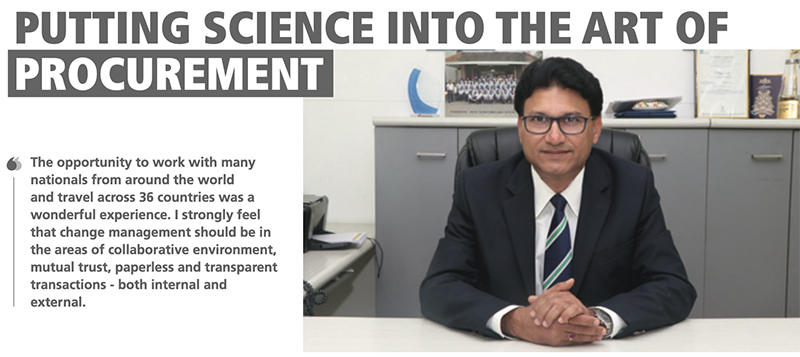
Prasanta Gupta,
Head – SCM, Heavy Civil IC
In his new role as Head – SCM, Prasanta Gupta (PG) has been mandated to achieve operational excellence by reducing cycle time to improve savings for the IC. “My first task was to roll out a ‘Standard Operating Procedure (SOP)’ that acts like a Bible that encompasses all the digital and data initiatives like document management through EDMS, scrap declaration, E Auction, base line costing, surplus diversion with a defined price policy, etc. This SOP automatically streamlined the process and enhanced efficiencies,” he says simply. “Based on 3-year data, we have introduced 63 top spend categories and mapped them with skill based category specialists in the SCM team.”
Compliance is an imperative for the success of processes and PG has set some strict conditions to ensure it. “The site must generate EMR in the specified e-format developed in SOP for the intended category and routed through the BU for need validation, which is the only data that SCM will work on. The annual procurement plan must be uploaded in EDMS as per the budget format to help us consolidate annual requirements. Sites must declare scrap accumulation by the 15th of every month in EDMS for scrap consolidation and better value realisation. New vendor registration and material transfer price policy to transfer excess materials across the IC should follow set procedures too.”
“We have introduced several digital initiatives starting with our annual procurement plan, need validation, e-sourcing, e-auction, surplus and scrap declaration, auto monitoring of activities in progress and monthly productivity aspects through Post Order management.”
He nods when quizzed about challenges. “For one, our data is still people-dependent, there is widespread non-compliance to standard procedures, lack of procurement plans that results in a high percentage of emergency procurements, fragmented purchases, absence of ‘need validation,’ lack of status updates and the Big Basket picture is missing,” he remarks.
In his previous avatar as Head – Capital Procurement, PG flags off his defining work on the High Speed Diesel (HSD) initiative under RACE. “We consolidated the entire L&T Diesel requirement – 200,000 KL/Annam, carried out strategic negotiations with oil marketing companies and the rate we worked out was an industry benchmark.”
“I am from the city of joy, Kolkata,” he proclaims with typical Bengali pride and it comes as no surprise that his wife, Subhra, is an MA in Tagore’s literature and interested in performing arts besides being a homemaker. “Our son, Adway, has just completed his masters from IIT, Bombay and is pursuing PhD in Arizona State University,” PG shares with unconcealed father’s pride.
“The opportunity to work with many nationals from around the world and travel across 36 countries was a wonderful experience,” he is effusive and adds, “I strongly feel that change management should be in the areas of collaborative environment, mutual trust, paperless and transparent transactions – both internal and external.”
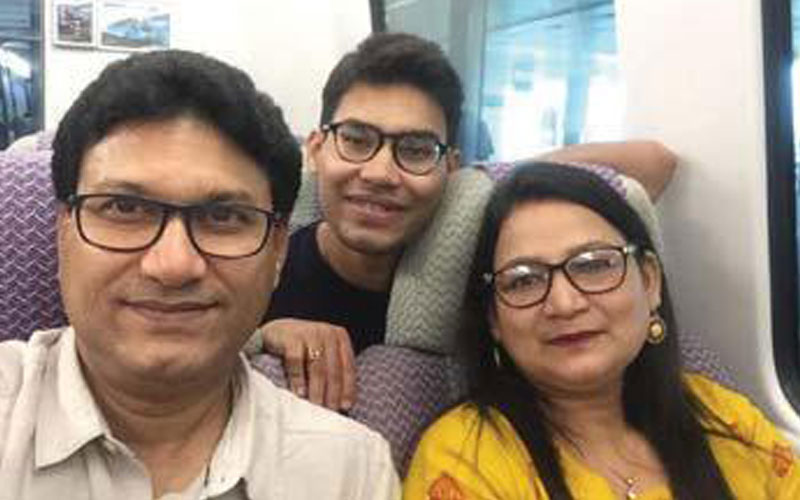
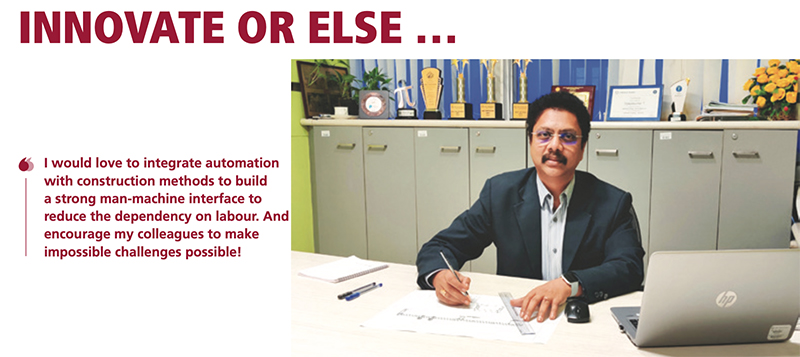
T Vijaya Kumar,
Head – CMPC, Heavy Civil IC
“As technologies change rapidly, for me heading construction methods, it’s vital to innovate or be left behind,” warns T Vijayakumar (TVK). “It is necessary to migrate to new technologies, embrace automation and digitalization but remain focused on improving operational efficiency and productivity.” Technologies and machines, mostly custom-made, are available off the shelves but they come at a huge cost. TVK’s mandate is to develop and customise them in house to the extent possible to shore up profitability. “Instead of purchasing high-priced, inflexible mechanized launching girders for special bridges, we developed standardized LGs suitable for our requirements that we successfully deployed at the 3rd Mandovi Bridge project. Bridge builders, form travellers have also been freshly developed in house.” For sustainable construction, “we implemented “ETAP’, a digital application, to identify and track reusability of major enabling structural steel, bridge equipment, etc.”
TVK’s story with L&T began in 1995 as a Site Engineer and later as Senior Design Engineer, he executed challenging tasks both in India and overseas. As Engineering Manager, “amongst others, I had the privilege to work on the SALPG project, the world’s largest underground storage cavern.” Kakrapar Atomic Power Plant and the 1200 MW Punatsangchu, India’s largest hydel project in Bhutan, were two key projects he was involved with as Chief Engineering Manager after which he moved from design to site execution on his elevation to JGM. “I am also Lead Designer (approved by client) for enabling structures for the Mumbai and Ahmedabad metro projects,” he adds.
The best of methods and designs need good people to execute them and therefore team building is always high on TVK’s priority list. “My strong CMPC teams at the Chennai and Mumbai clusters and project sites handle day-to-day CMPC designs for speedy customer-friendly delivery to clients with accurate and workable solutions while a specialized 3D animation team simulates construction methods and designs to make visualization easy for customers.” All CMPC design and drafting are moving on to a 3D platform. “I am particularly proud of the process of conceptualization to erect a thin modular ring liner at Kakrapar Atomic Plant 3&4 that set a trend in nuclear construction.” An automated hydraulically operated movable formwork developed to precast post tensioned I-girders has given huge benefits. “40% less labour, 28% reduction of cycle time, 29% reduction in structural steel quantity,” smiles TVK, “it was first of its kind in India and perhaps the world too!”
A lover of yoga, physical training, philosophy and music, TVK’s better half, Manjula, is a homemaker and they are blessed with two children, daughter, Lokeshwari and son, Nandakishore. TVK’s CMPC is much awarded having been recognized as the Best Engineering, Best Innovation and Best CAD CMPC for 2020.
“I would love to integrate automation with construction methods to build a strong man-machine interface to reduce the dependency on labour,” says TVK, “and encourage my colleagues to make impossible challenges possible!”
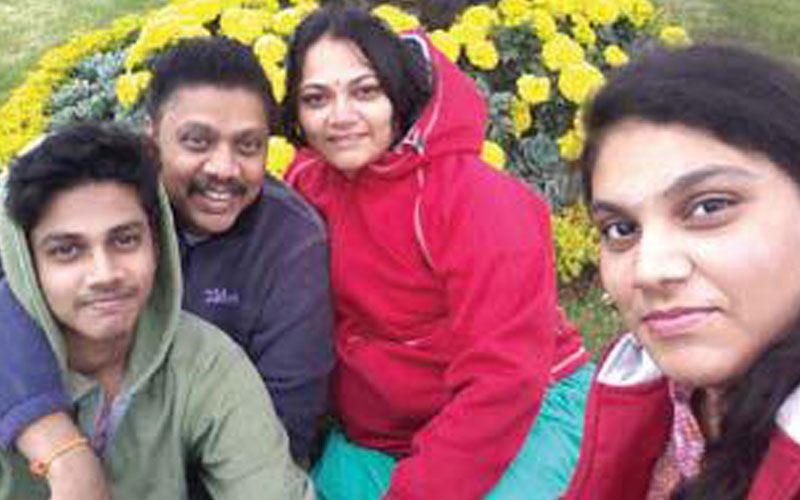
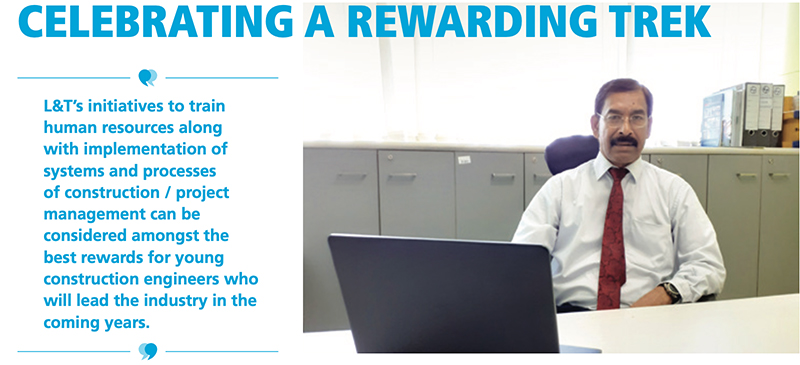
– Roy George,
Head – Formwork, Heavy Civil IC
He loves long drives in the western ghats and trekking in the mountains with his family and certainly for Roy George, Head – Formwork, Heavy Civil IC, his three-and-a-half-decade long career has been a wonderful and rewarding trek in the highly competitive Indian and Middle East markets, “building high profile infrastructure projects with a thorough knowledge of engineering principles, construction methods and formwork engineering,” he says. Currently, Roy heads the formwork department, leading a team of 200+ supervisors and engineers with the mandate to strengthen the core team of the work force and supervisory staff to improve productivity, skill levels of the work force and cycle time of formwork to reduce cost. Our focus,” he emphasizes, “is to achieve increased volume with semi-skilled manpower to attain more repetitions with available inhouse resources.”
The system formwork at L&T Construction has been adapted and designed to provide extra-large area formwork and Roy flags off the pier work at the Medigadda Barrage site and pumphouse walls at the HTS project as successes. “While we handled 10 m high wall formwork for piers at the Medigadda project, at HTS, we designed 16 m high wall formwork to cast the main walls of the pumphouse that reduced cycle time from the expected 80 days to just 30 days! In the process, we significantly reduced the number of activities, indirect costs and other resources,” he sounds exultant.
Warming to his pet subject, Roy shares, “the most important cost component is frequency of identical construction and repetitiveness. Mechanisation of system formwork is the solution to handle large volumes of work with moving formwork, table form and the automatic climbing system. The moving formwork with the L&T System for slab and wall can be seen operating in the discharge tunnel at the HTS project while the flying system with table form for pier head is in action at the Kachhi Darga project.”
Roy is all praise for the opportunities, challenges and support services offered by L&T. “They are enormous and cannot be expected from any other construction company. L&T’s initiatives to train human resources along with implementation of systems and processes of construction / project management can be considered amongst the best rewards for young construction engineers who will lead the industry in the coming years,” he concludes positively.
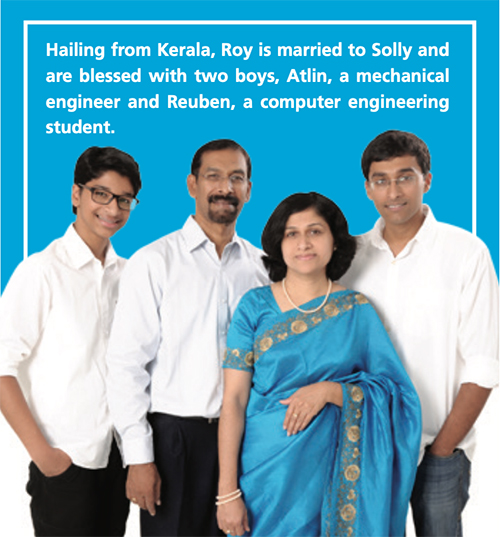

– V Nagendran,
Project Manager, Vizag Vessels, Heavy Civil IC
His son is a state level chess champion and therefore Project Manager, V Nagendran’s mental agility is hardly surprising. “I head the Heavy Civil execution team at the Vizag Vessels project comprising 150 employees, 300 engineering supervisors and about 2,500 workmen and am also responsible to coordinate between the various stakeholders: our internal team, the team from Defence Engineering, the client, their planning department, customer service teams, security teams, the list is endless.” After joining L&T in 1997, Nagendran has had several quarrying related stints across projects. “To take up a larger role with more responsibilities, I chose to move into project execution and in January 2016, I got the opportunity to work on this project and from August 2018, I have taken over as Project Manager.”
“The uniqueness of the Vizag project is its complexity with about 35 million parts to be installed and, at any point of time, some 600 – 800 people working in extremely confined spaces which is why safety is of utmost importance.” The project has consistently been platinum rated for safety and clocked 11.5 million safe man hours till date. “Quality is another focus area: a pipe spool installation in any other project would have about 8 stages of inspections; here there are only 38!” He grins at our surprise. “We ensure that every stringent quality requirement is met for every installation because we realize the sensitivity and importance of this national project. Finally, we cannot compromise on progress. With so many components to be installed in confined spaces, sequencing is key.”
“We maintain 97% FTRC (First Time Right Clearance),” he states proudly, mentioning that it has been achieved following a strenuous process. “The Quick Release Couplings we developed for hydro pressure and leak tests are paying rich dividends.” Initially at the project, Nagendran was leading a SCMG team of 235 workmen and supervisors. “Today, we operate with only 120 people and do much more and that is the power of digitalization,” he says, mentioning a host of digital solutions adopted including Workman Management System (WMS), Daily Labour Report (DLR), OSCAR, 100% biometric attendance marking of workmen and supervisors and RFID tracking.
“All our employees have great entrepreneurship that is working well for L&T Construction,” he shares. “People own their job, take accountability and responsibility, our organization works on systems and, of course, we refine our system continuously based on the feedback and results and that should continue.”
Nagendran’s wife, Ashtalakshmi is a homemaker. “She takes care of the home front and has to travel extensively to facilitate my son, Vignesh, to play his chess tournaments.” His daughter, Nivetha is studying computer engineering. “I don’t have any hobbies,” grins Nagendran, “but love the time I get to spend with my family.”
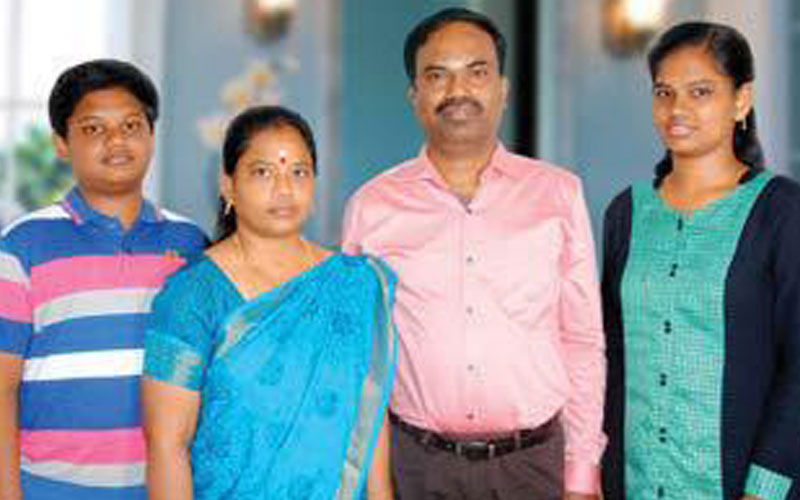

Anup Kumar Anupam,
Head – DGM – Formworks, Heavy Civil IC
An expert in slip form technique of formwork, Anup Kumar Anupam’s role as DGM – Formworks is fast assuming critical importance in construction. Anup is presently playing his second innings at L&T, as it were, after an initial stint from 2004 – 08 as Assistant Construction Manager & as Slip Form In charge when he was involved in the Saint Gobain and Asahi glass factory projects and the expansion of the 10,000 TPD capacity cement plant for Ultratech Cement, Phase 2, at APCW-Tadipatri in Andhra Pradesh. After his return from Essar Projects India Ltd., Anup is presently at the Kudankulam KKNP-HTS Phase 2 project where “I am involved in a key OPEX initiative to construct a 16 m high Large Area Wall Formwork in a single pour,” he explains.
Non-availability of skilled manpower is one of Anup’s biggest challenges. “Especially when constructing such a sensitive asset like a nuclear power plant and the only solution is to train our available manpower at site and skill them sufficiently to carry out their responsibilities well. We provide on-site training related to formworks as well and for scaffolding through mock-ups and presentations.”
Implementing the travelling system for tunnel wall formwork with a scope of 920 RM with combination of 10 tunnels has been one of his unique steps to enhance operational efficiency. “I am really impressed with the way digitalization has been driven by our senior management that has far greater acceptance now at project level as people have started to understand and appreciate its huge benefits. We have deployed a digital pressure gauge to monitor real time the concrete pressure in wall formwork and as well as on the tie system,” he shares. “We have also deployed RFID to track manpower movement and to assess productivity by tracking actual working hours. Both,” he motions with his hands, “are fetching us good results and improved efficiency.”
As a thoroughbred formwork man, Anup says, “Given a chance, I would certainly implement mechanised construction in the field of formwork to execute projects that will both minimise the deployment of manpower and improve efficiency while adopting new technologies, especially digitalization, to, for example, track shutter panels with RFID tagging, will go a long way to enhance our efficiencies.”
A native of Patna, Bihar, Anup loves watching sports on TV during his free time and spending time with his wife, Poonam Kumari who is a homemaker and their two children, son, Akash Tushar and daughter, Aanchal A. “My most memorable moment was when Aanchal secured her MBBS seat,” he shares delightedly.
